LG washing machine does not drain or squeeze
 If the LG washing machine does not drain the water and does not squeeze the laundry, what can be done in such a situation? Users mercilessly exploiting their Korean "home assistant" may one day be faced with such a problem. You can immediately call the wizard and this will be the most correct solution. But if you have the time and desire to deal with the problem yourself, take note of the information that we will present in this publication.
If the LG washing machine does not drain the water and does not squeeze the laundry, what can be done in such a situation? Users mercilessly exploiting their Korean "home assistant" may one day be faced with such a problem. You can immediately call the wizard and this will be the most correct solution. But if you have the time and desire to deal with the problem yourself, take note of the information that we will present in this publication.
What caused the breakdown?
The specialist, relying on his experience, is able to quickly determine the reason why the LG washing machine does not want to merge and squeeze the laundry, and then quickly eliminate the breakdown. It is much more difficult for the average user to do this, first of all due to the lack of experience and the corresponding skills in working with equipment, but if you show patience and do not spare labor and time, everything will work out. First you need to decide on the algorithm for finding a breakdown.
Knowing the approximate procedure for finding the cause of a malfunction, you can greatly simplify your task.
- First, we check for dirt plugs and stuck objects: a waste filter, nozzles and a pump.
- Then we look at the pump in more detail for mechanical and electrical breakdowns.
- Next, remove the pressure switch and check if it is clogged, and then test the water level sensor with a multimeter.
- Last of all, we check all the wiring inside the housing of the LG washing machine and the control module.
Adhering to this plan, you are highly likely to be able to detect a malfunction. But as they say, do not forget to keep your eyes open and notice all the oddities when disassembling the washing machine. In this case, you are more likely to gain experience and be able to solve this and other problems, because the technique breaks down not the first or not the last time.
The machine clogged with dirt
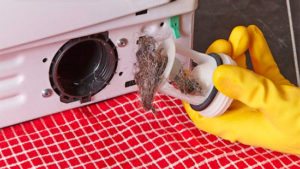 Most often, the LG washer stops squeezing and draining water, not even because of mud blockages, but because of the ingress of foreign objects into the nozzle or trash filter. Even if a foreign object did not immediately plug the drain path, over time small debris will settle on it and a partial blockage will turn into a continuous plug through which water will hardly leak.
Most often, the LG washer stops squeezing and draining water, not even because of mud blockages, but because of the ingress of foreign objects into the nozzle or trash filter. Even if a foreign object did not immediately plug the drain path, over time small debris will settle on it and a partial blockage will turn into a continuous plug through which water will hardly leak.
The drain path of the LG washing machine is made so that 90% of the foreign objects that get there randomly settle on or near the waste filter. This is a huge plus, because getting to the trash filter is incomparably easier than to any other internal parts of the Korean washing machine. We’ll start with the filter.
- In the lower right corner of the housing of the LG washing machine, find the small plastic cover and open it.
- Under the lid you will see a large black cork, next to which a small hose stuck with a cork sticks out.
- Place a shallow container under the hose to drain the water remaining in the tank. This is done as follows: open the cork, fill the container, close the cork, pour water from the container, and then refill the vessel until all the water in the tank has been removed.
To avoid wetting the floor again, lay a few absorbent rags near the front of the LG washing machine.
- We unscrew the trash filter. You need to turn it half a turn to the left, and then pull it out on yourself. If you haven’t pulled out the filter for a long time, it can stick, but this is not critical, pull harder and it will pop out.
- Inspect the filter itself and the hole from which you removed it. Remove all foreign objects and dirt that are stuck there. Often, users clean the filter when they get stuck: socks, bra bones, coins, paper clips, pins, buttons, swimming trunks, and much more.
If you find something like this in the trash filter, consider that the problem of difficulty draining is resolved. But if the filter turned out to be clean, well, or almost clean, and nothing got stuck there, the search must be continued.
Defective drain pump
In the next inspection step, we will continue to search for blockages in the washing machine. To do this, we will examine the nozzles, drain hose and, of course, the pump. We will focus on the drain pump, since it really needs to be checked with all possible care. We pull out the plug of the washing machine’s power cord from the outlet, turn off the water, disconnect the inlet and outlet hoses, and then carefully pull out the washing machine to where it will be more or less convenient to work with. Next we do the following.
- We remove and remove the powder tray to the side.
- Carefully, without sudden movements, put the washer on the left side.
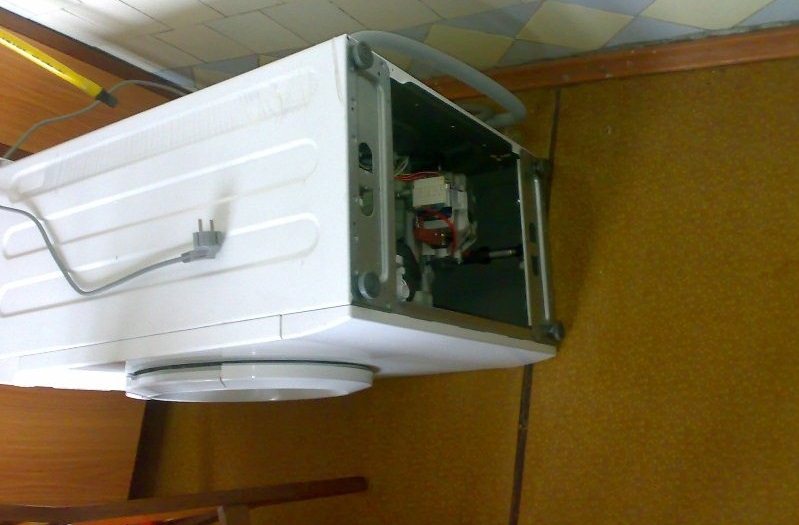
- Having received partial access to the inside of the LG washing machine through the bottom, weaken and slide down the clamps fixing the drain pipe going from the tank.
- We remove the nozzle and see if anything foreign is stuck there.
- We clean and rinse the nozzle, then put it in place.
- Next, disconnect the drain hose and check for clogging.
- Lastly, unscrew the pump mount and remove it for inspection.
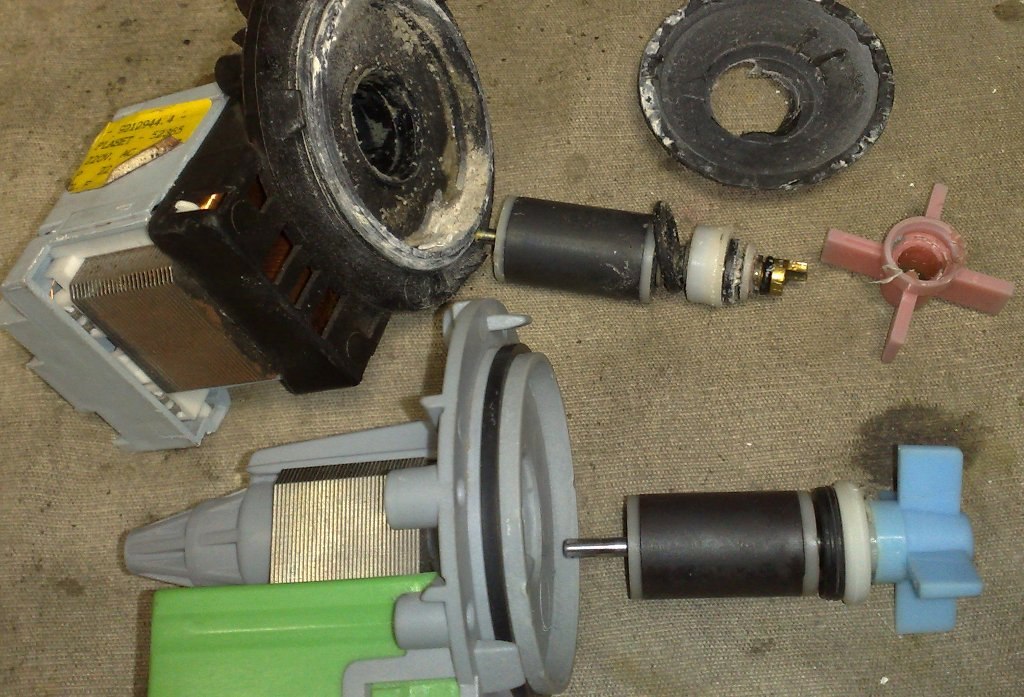
To begin, the pump casing is disassembled into two halves and inspect the impeller for contamination. Often on the impeller you can find coiled threads, human hair, and even rags of thin tissue. All this makes it difficult or impossible to rotate this movable part, which means that the pump simply ceases to function. If the impeller rotates normally and nothing foreign is wound on it, it is necessary to check the operability of the electrical part of the pump.
Make it easy. We take a device called a multimeter. We turn it on the toggle switch, setting the resistance test mode. We begin the verification. If, as a result, the device shows a large number, then it is not the pump, if the numbers 1 or 0 are displayed, it is bad, the pump must be replaced.
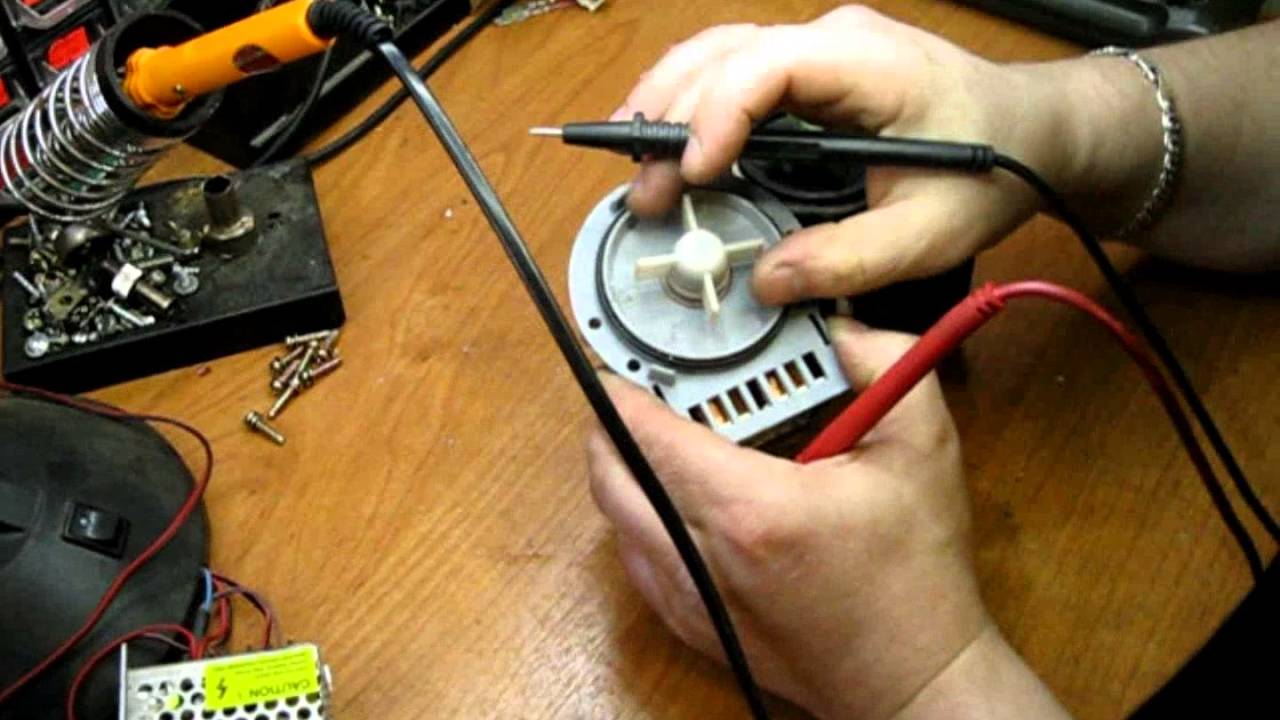
Inspect and ring the chip and the wires connected to the drain pump; a burnt out wiring or a melted contact may well disrupt the performance of the “home assistant”.
Level sensor or control module?
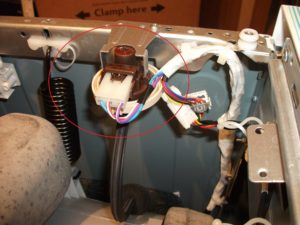 Washing things in a washing machine by an LG brand automatic machine is not possible if the water level sensor is malfunctioning, and if the sensor is completely burned out, then this is a problem that needs immediate resolution. To check the water level sensor, you need to find it. This is not difficult to do, you must first remove the top cover of the LG washer. Under it, in the right front corner of the case, right behind the panel, you will see a chip-shaped round contraption, with a sensor attached to it - this is the pressure switch.
Washing things in a washing machine by an LG brand automatic machine is not possible if the water level sensor is malfunctioning, and if the sensor is completely burned out, then this is a problem that needs immediate resolution. To check the water level sensor, you need to find it. This is not difficult to do, you must first remove the top cover of the LG washer. Under it, in the right front corner of the case, right behind the panel, you will see a chip-shaped round contraption, with a sensor attached to it - this is the pressure switch.
We will not separately describe the process of dismantling and checking it, since we have already done this as part of the article Spin and drain of water in the Samsung washing machine does not work. In LG washing machines, the pressure switch is removed and checked in the same way.
If everything is in order with the water level sensor, but the LG washer still does not drain the water and does not squeeze things out, this most likely means a breakdown of the electronics, specifically the control module. The reasons why the electronics of the washing machine breaks, more than enough:
- various types of power outages;
- poor-quality soldering of board tracks;
- moisture on the electronic module;
- user errors, etc.
Whatever the cause of the breakdown, it is better not to look for it yourself. Even if you have experience working with electronics, the risk of breaking an expensive part is too great. For our part, we can not advise you to repair the module yourself - contact the professionals!
Summing up, we note that if your LG washing machine refuses to drain the water after washing and does not squeeze the laundry, you can try to cope with the problem yourself, but remember, if the malfunction affected the electronic part of the “home assistant”, it is better to delegate the repair to a specialist.
Interesting:
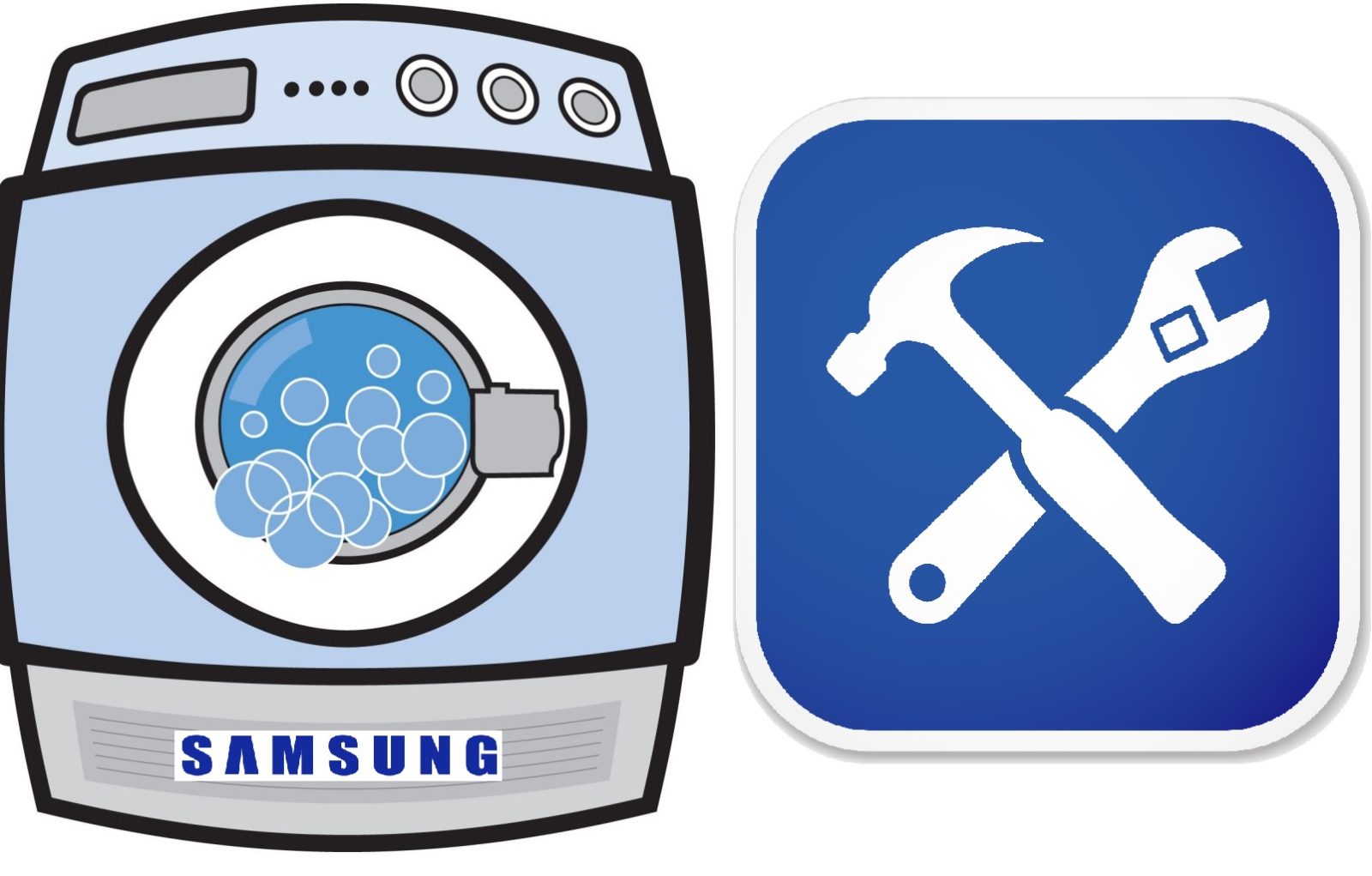 Samsung washing machine - does not work spin and drain the water
Samsung washing machine - does not work spin and drain the water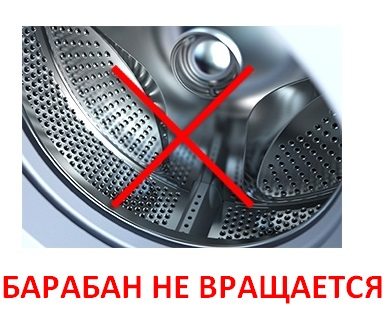 Doesn't spin the drum in a Samsung washing machine
Doesn't spin the drum in a Samsung washing machine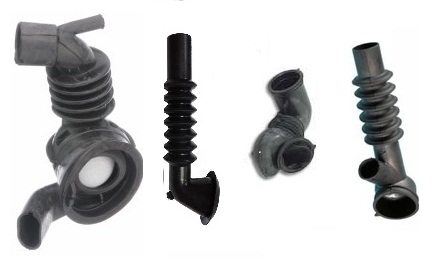 Spout for a washing machine - overview
Spout for a washing machine - overview Gorenje washing machine error codes
Gorenje washing machine error codes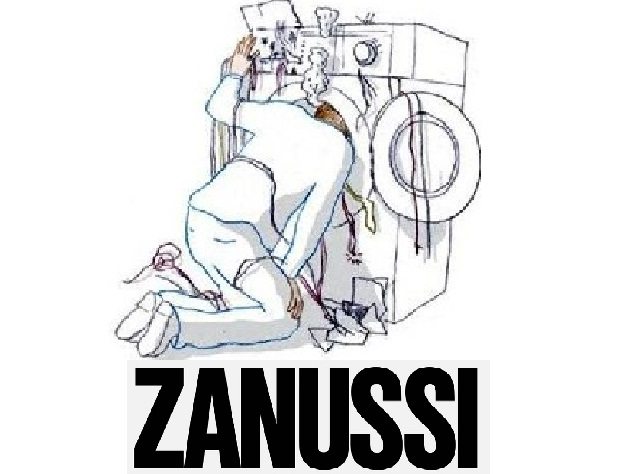 Zanussi washing machine does not drain and does not wring
Zanussi washing machine does not drain and does not wring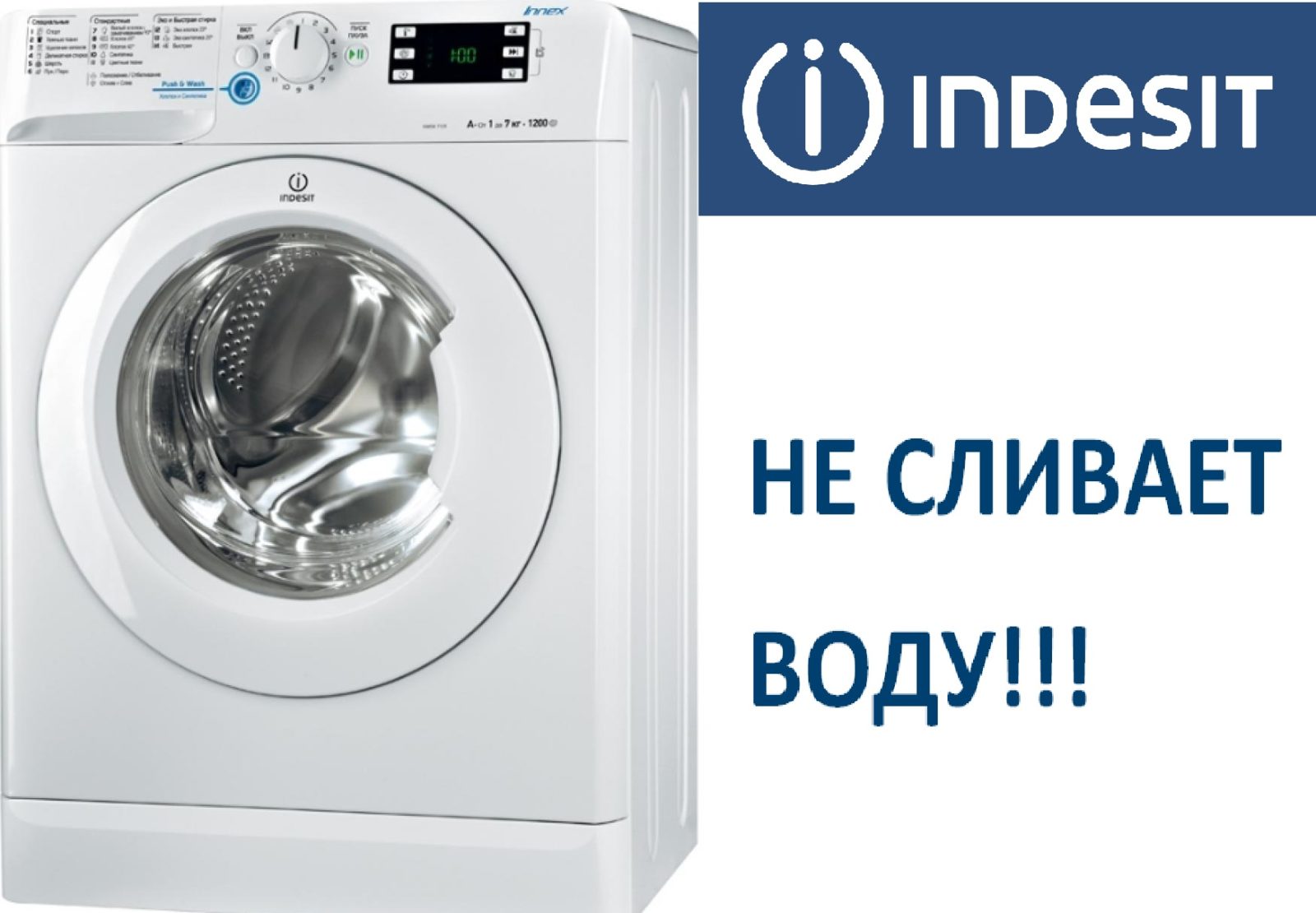 Why doesn't the Indesit washing machine drain the water and ...
Why doesn't the Indesit washing machine drain the water and ...
19 reader comments
Add a comment Cancel reply
Headings
Washing machine repair


For buyers
For users

Dishwasher












Thanks for the article, the sock is stuck.
Thanks for the info, it helped a lot! 🙂
Thanks to the author for a useful article! The machine stopped draining and squeezing. I cleaned the trash filter and the washer is working as before.
Thanks for the article, there was a cotton swab in the filter. Cleaned and it worked!
The article helped. The trash filter is clogged. Coins and stuff. Cleaned - it worked. Thank!
Also, the machine stopped pressing, I read this article, unscrewed the filter, and there was dirt and a piece of rag. I cleaned it and it worked. Thank you for the article!
Thanks for the helpful article. Everything is very clear.
Everything is very intelligible and clear, even for me. Thank!
Thanks 🙂 I cleaned the filter and everything works!
Many thanks to the author. Helped.
Thank. I cleaned the filter and it worked.
Thank!
Good evening! The spinner does not work for the machine, and the drain only once. The filter is clean, the drain hose is also free. What could be?
Thank!!!
Hello. And what could be?
Prezik wound on the pump ... thanks for the article!
Thank you, household members have raked in the pockets for garbage! 🙂
Where is the filter located?
Thank! Cleaned the filter and earned. At the same time, she arranged a “bathhouse” for 95 *. Very happy! I do not like this man-made stress.